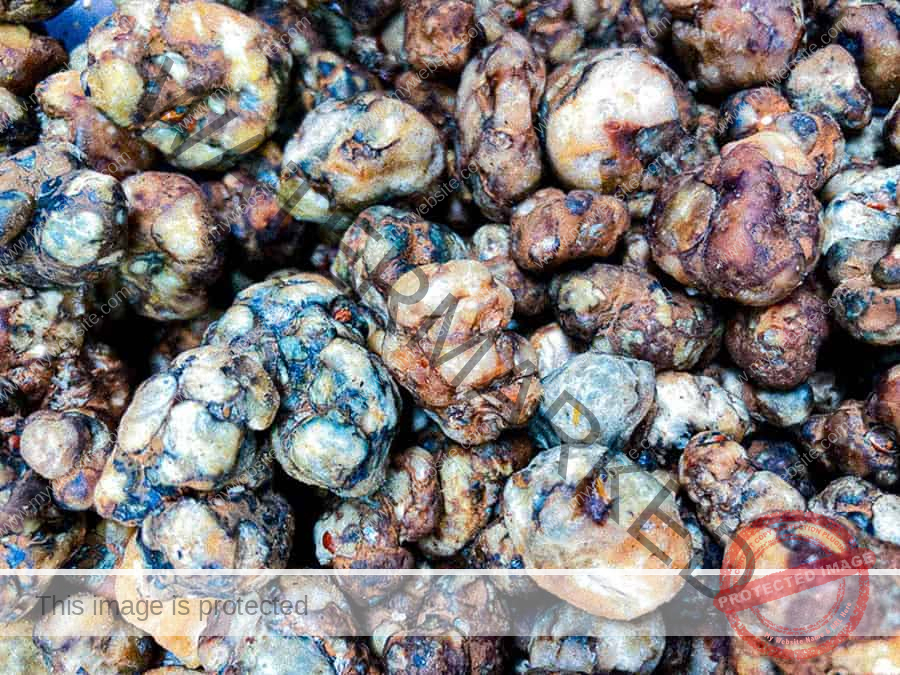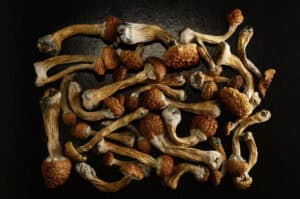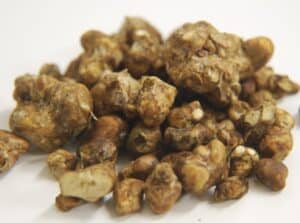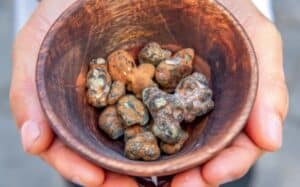
Magic Truffles vs. Mushrooms: How They Work
17 December 2024
Table of Contents
- What Are Magic Truffles?
- Magic Truffles vs. Mushrooms: Key Differences
- How Do Psychedelic Truffles and Mushrooms Work?
- Magic Truffles for Mental Health: A Closer Look
- Comparing Experiences: Magic Truffles vs Mushrooms
- Are Magic Truffles Right for You?
- Magic Truffles in the Context of Modern Therapy
- Final Thoughts
Taking a look at magic truffles you will notice they look very different than a dried mushroom. But what exactly is the difference between the two and do they have the same mechanisms of action? Do the induce the same effects?
Here we will explore the key differences between magic truffles and magic mushrooms, but the key thing here is that they are both known to have psychedelic effects. Apart from their visual differences their effects do not differ.
What Are Magic Truffles?
To understand the difference between magic truffles and mushrooms, it’s essential to know what magic truffles are.
- The Basics Magic truffles are the subterranean part of certain fungi, technically known as sclerotia. They serve as a storage vessel for nutrients, helping fungi survive in harsh conditions. Unlike the visible fruiting bodies (mushrooms), truffles grow underground.
- Psychoactive Compounds Like their mushroom counterparts, magic truffles contain psilocybin, a compound that converts to psilocin in the body. This compound is responsible for the psychedelic effects that have captivated researchers and users alike.
- Why “Magic”? The term “magic” refers to the psychoactive properties of these truffles. They are believed to promote emotional insight, creative thinking, and, in some cases, a sense of unity with the world. Similar to the term given to magic mushrooms.

Magic Truffles vs. Mushrooms: Key Differences
Although magic truffles and mushrooms share the same active ingredient, there are differences in how they grow, are consumed, and how they affect the user.
Growth and Appearance
Magic mushrooms grow above ground and are the reproductive fruit of fungi. Magic truffles, on the other hand, grow underground as a dense cluster of fungal material.
Truffles have to be harvested differently because they grow in a different environment. Because truffles grow underground and are essentially the dormant version of mushrooms, you must dig them up rather than pick them as you could mushrooms.
Truffles and mushrooms can both be dried in the same way but interestingly truffles have less water content. This creates a strange appearance for truffles, you may notice that truffles have a harder more rugged look whereas mushrooms look softer when dried.
Potency
The potency of magic truffles vs mushrooms can vary but because they both stem from the same being they both contain psilocybin and psilocin meaning they can both have lots of potency.
A lot of the assumptions that mushrooms can be more potent may come from the simple fact that the way truffles are being sold and consumed is in a more precise manner. Meaning that psychedelic mushrooms mushrooms, which are not often sold in businesses, are weighed at home and taken without exact measurement. While truffles on the other hand are measured more precisely in the shops and dosages are suggested so that the experience is a more tailored and controlled one.
Remember then, that this does not mean mushrooms are themselves more potent than truffles it just means there may be other factors at play.
Legal Status
In many countries, magic truffles are legal, whereas mushrooms are not. For example, in the Netherlands, truffles can be purchased legally, making them a popular option for retreats like a psilocybin retreat Netherlands.
It seems to be a legal loophole for many to offer truffles in this form as in the past occurrences have made it so that magic mushrooms are illegal but psilocybin containing truffles are not.
How Do Psychedelic Truffles and Mushrooms Work?
Both truffles and mushrooms interact with the brain in similar ways, but their effects may differ based on dosage, preparation, and individual biochemistry.
Psilocybin’s Role
Once ingested, psilocybin converts into psilocin, which binds to serotonin receptors in the brain. This process leads to altered perception, enhanced introspection, and, for some, a sense of euphoria or connectedness.
Brain Connectivity
Research shows that psilocybin enhances communication between different brain regions, potentially breaking down rigid thought patterns. This effect is why both truffles and mushrooms are being explored for their therapeutic potential, including for conditions like depression, anxiety and or other mood disorders
With all of the new research on psychedelics it is always important to remember that this is a new field and we do not know the exact mechanisms behind which these substances are working in the brain. Nor do we know what their long-term effects will be.

Magic Truffles for Mental Health: A Closer Look
As mentioned above, magic truffles and mushrooms are making waves in the mental health community. Their accessibility and therapeutic potential make them a viable option for people seeking alternative treatments.
Magic Truffles and Depression
One of the most promising uses of magic truffles is in treating depression. Studies suggest that psilocybin can help individuals process emotions, reduce negative thought patterns, and improve overall mental well-being. This makes psilocybin depression treatments an exciting area of research.
Why Choose Truffles Over Mushrooms?
The main reason to choose truffles over mushrooms is to ensure that you are following the law in your area. In the end both truffles and mushrooms should induce the same effects.

Comparing Experiences: Magic Truffles vs Mushrooms
Intensity
Psychedelic mushrooms and truffles both contain the compounds responsible for inducing the psychedelic experience. The duration of the trip is approximately 6-8 hours for either truffles or shrooms. The intensity and duration can be about the same.
Setting and Context
Truffles are popular in guided settings like retreats. For example, a psilocybin retreat Netherlands provides a controlled environment to ensure safety and maximize the experience.
Are Magic Truffles Right for You?
If you’re considering a psychedelic experience, it’s important to weigh your options carefully. Magic truffles offer safety in accessibility, as well as therapeutic potential, making them an excellent choice for first-timers and seasoned users alike.
Safety First
Always consume magic truffles in a safe, controlled environment, ideally with professional guidance or at a reputable retreat.
Personal Goals
Consider what you hope to gain from the experience. Are you looking for deep introspection, emotional healing, or just curiosity? Your goals will influence whether truffles or mushrooms are the better option.

Magic Truffles in the Context of Modern Therapy
Therapists and researchers are increasingly integrating magic truffles into structured therapy sessions. These sessions often combine truffle use with psychotherapy, creating a holistic approach to healing.
Final Thoughts
Psychedelic truffles and mushrooms both hold immense potential for personal and therapeutic use. Whether you’re seeking relief from depression, exploring your consciousness, or simply curious about how these substances work, understanding their differences can help you make an informed choice.Magic truffles stand out for their accessibility and legality in certain regions making them a fantastic entry point into the world of psychedelics. As research continues to evolve, these natural substances may play an even greater role in mental health care.
References
Gotvaldová, K., Hájková, K., Borovička, J., Jurok, R., Cihlářová, P., & Kuchař, M. (2021). Stability of psilocybin and its four analogs in the biomass of the psychotropic mushroom Psilocybe cubensis. Drug testing and analysis, 13(2), 439–446. https://doi.org/10.1002/dta.2950
Pellegrini, M., Rotolo, M. C., Marchei, E., Pacifici, R., Saggio, F., & Pichini, S. (2013). Magic truffles or Philosopher’s stones: a legal way to sell psilocybin?. Drug testing and analysis, 5(3), 182–185. https://doi.org/10.1002/dta.1400


